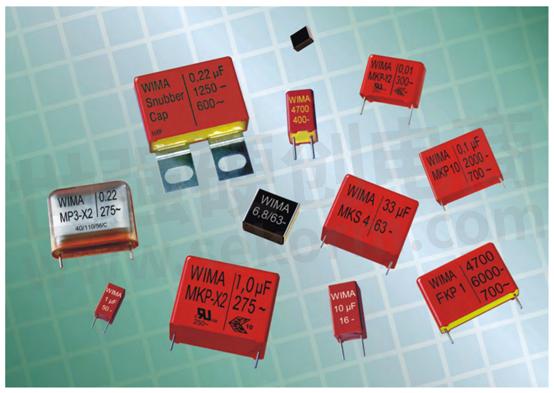Is the Film Capacitor a Discontinued Model?

Is the Film capacitor in the process of becoming a victim of technical progress or is it a case of a passive electronic component which, when considered superficially, just runs the risk of being underestimated more easily than others, but nevertheless still holds potential for the future? This topic is to be treated in the following text from the point of view of a film capacitor specialist.

Is the film capacitor a victim of RoHS?
This alarming and, at the same time, the provocative question was to be found some time ago as a headline in a well-known weekly electronic magazine. It was the title of a short column, which was part of a discussion forum on "Passive Components" with 11 participants. Only two of the participants came from the manufacturing side, the others were representatives of well-known distribution companies. The content of this forum did not even deal with the topic of possible competitive component technologies and their future prospects, but rather with questions of a more general nature, e.g. further economic prospects for the year 2005, delivery times, prices, the influence of the topics RoHS and WEEE on buying behavior, China as a market or producer and many other things.
That the film capacitor of all things should have received a particularly negative headline in this connection, did not seem quite plausible. The topic “RoHS victim” was extended by the skeptical question as to whether the film capacitor had even kept up with the technical development of recent years. The quintessence summarized in a few words: the film capacitor is not only the future victim of the RoHS directive but, furthermore, a veteran among passive components, especially capacitors, which has long since missed the boat in technical progress.
The opinion of the participants in the discussion was divided on this subject. Whilst one participant specifically stood up for the development capability of the film capacitor and for the fact that, in certain applications, there was, for him, no substitute as far as quality was concerned, others believed that, because it was a through-hole device and too expensive, it could be replaced by ceramic components, or that the SMD version of the film capacitor would not stand up to the higher soldering temperatures necessary to comply with the RoHS changes. After this statement from the distributor's side, only one of the two manufacturers, who “also” produces film capacitors, commented: “We are not pushing ahead with the SMD film capacitor, we favor MLCCs in this connection.” The other manufacturer, who also produces film capacitors among other things, chose to remain silent about this controversial topic.
It was certainly regrettable that no representative of the film capacitor specialists took part in the said discussions and that certain arguments were, therefore, left unsaid. This article intends to put this right.
Film capacitors and technical development
First, it should be made clear that RoHS is not the expression of technical progress itself, but, at the most, the expression of progress in the framework of environmental protection. The aim of RoHS is the reduction of environmental pollution by poisonous substances which are contained in electronic scrap. Especially, for this reason, electronic components, circuit boards, and soldering substances are, in the future, to be lead-free.
As far as the material used for its construction is concerned, being lead-free poses no problem for the film capacitor, in contrast to certain other types of capacitor. At the most, the higher temperatures required by the RoHS conversion due to the necessity of using lead-free soldering material can cause problems for SMD film capacitors made of PET, as they are subjected to the temperature stress of the soldering process all over the surface. For the majority of film capacitors, about 80-90%, which are still produced in the through-hole form, this poses absolutely no problem. Therefore the sweeping question “Is the film capacitor a victim of RoHS?” is not only incorrectly put, but also completely nonsensical.
But even for SMD film capacitors, whether in the wound or stacked technology, whether bare or with protective encapsulation, the solutions have long since been found in the form of heat-resistant plastic dielectrics: the capacitor films PEN and PPS which have been commercially available for years. By using heat-resistant plastic dielectric film, SMD film capacitors make a contribution to technical progress even within the context of RoHS. On the other hand, it is questionable whether the MLCC is completely able to do so. It may consist of dielectric material which basically cannot melt, but, due to RoHS, it is subject to an increased crack risk compared to previously, due to greater temperature stress occurring during and immediately after the soldering process. The general indication that the film capacitor may have lost ground to the MLCC because of the latter's smaller structure and even cheaper prices, is not necessarily the result of some sort of technical progress whatever its nature may be, but rather the result of global pressure on costs and prices. The consequence and integral part of technical progress is, however, progressive integration. Applications for all standard capacitors, whether film capacitors or MLCC, whether through-hole or in the SMD version, have fallen victim to this integration.
The question remains as to whether the acknowledged superior quality of the film capacitor as compared to other capacitors with other technologies, e.g. regarding the temperature drift of the MLCC, is not also an integral part of technical progress or may at least be considered as contributing to it. The proof that the film capacitor is not an antique, outdated product, but rather offers, even in the future, a solution for every demanding application in the framework of modern developments.
- +1 Like
- Add to Favorites
Recommend
- New Arrival: Exxelia‘s FP 20-400-SP High Performance Power Film Capacitor with Max Power of 400KVAR
- Is the Film Capacitor a Discontinued Mdel?
- Exxelia Unveils Two Brand New High Temperature Film Capacitors Series Operating up to 200°c
- Exxelia to Show Latest Innovations in Film Capacitors and Magnetic Components at SIAE 2023
- Exxelia Film Capacitors Designed for Medical and Railway Applications Now Benefit from Reduced Delivery Times
- Analysis on the Application of Film Capacitors in Electromagnetic Heating Equipment
- Elevating AED Performance With Exxelia Ohmcraft Resistors & Alcon Power Film Capacitors
- EXXELIA‘s Film Capacitors Helped NASA‘s Perseverance Robot with Measuring and Sampling on Mars
This document is provided by Sekorm Platform for VIP exclusive service. The copyright is owned by Sekorm. Without authorization, any medias, websites or individual are not allowed to reprint. When authorizing the reprint, the link of www.sekorm.com must be indicated.





























































































































































































































































































































































































































































































































































































































































































































































































































































































